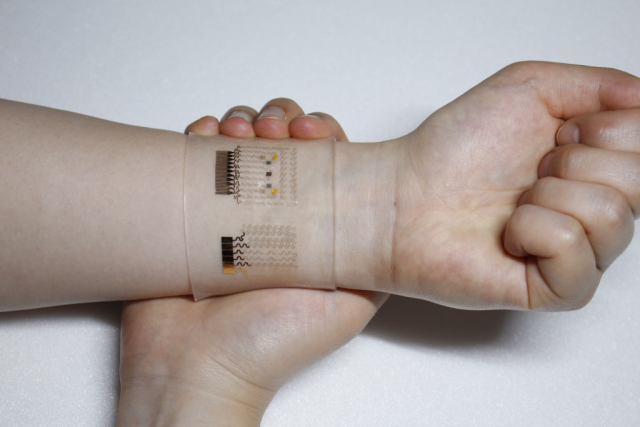A flexible device with graphene monitors glucose levels and injects medication.

An international team of engineers from Korean and American medical institutes and laboratories has developed a prototype of a flexible device that is attached to the skin to help patients with type 2 diabetes. The device measures the level of glucose in the blood and, if necessary, injects metformin - hypoglycemic drug into the blood .
Patients with type 2 diabetes are forced to constantly measure their blood glucose levels by taking a small amount of blood, and, depending on the measurements, adjust the diet and take medications. Scientists have long been working on the creation of non-invasive methods for measuring glucose levels.
In particular, it has recently been shownThat the blood glucose level can be estimated with sufficient accuracy by measuring the glucose level in perspiration. At the same time, the delay between changes in blood levels and sweat remains constant. This property and used the engineers in their device .
The device on a flexible basis is fixed on the skin in the manner of a plaster. It contains an array of gold-plated graphene sensors connected by a network of contacts. The device contains glucose oxidase - an enzyme that oxidizes glucose. A series of chemical reactions that occur with the participation of glucose that appears in the sweat, leads to the fact that its level can be reliably measured.
The device is connected to a portable analyzer, which also provides power for its operation. And the presence of microneedles capable of delivering metformin to the blood makes the device even more convenient to use.
Polymeric microneedle coated with tridecanoic acid, preventing premature release of the drug due to its hydrophobic properties. When a given glucose level is detected in the blood, the microneedles heat up, the acid dissolves, and the medicine enters the blood.
Although the prototype of the device requires a certain calibration to work with a specific person, during tests it proved to be quite reliable and long lasting. One “patch” can work continuously for several days (at least 24 hours).
It also turned out that metformin itself, as well as such common medications as paracetamol and aspirin, have virtually no effect on the accuracy of glucose levels. But it turned out that this accuracy falls at temperatures below room temperature - which means that during the cold season the current prototype of the device will not work as well.
Having recognized the prototype tests as successful, scientists are working on solving the identified problems and other factors that must be considered before commercialization of the device becomes possible. If successful, the device will be one of the first examples of commercial use of graphene.
